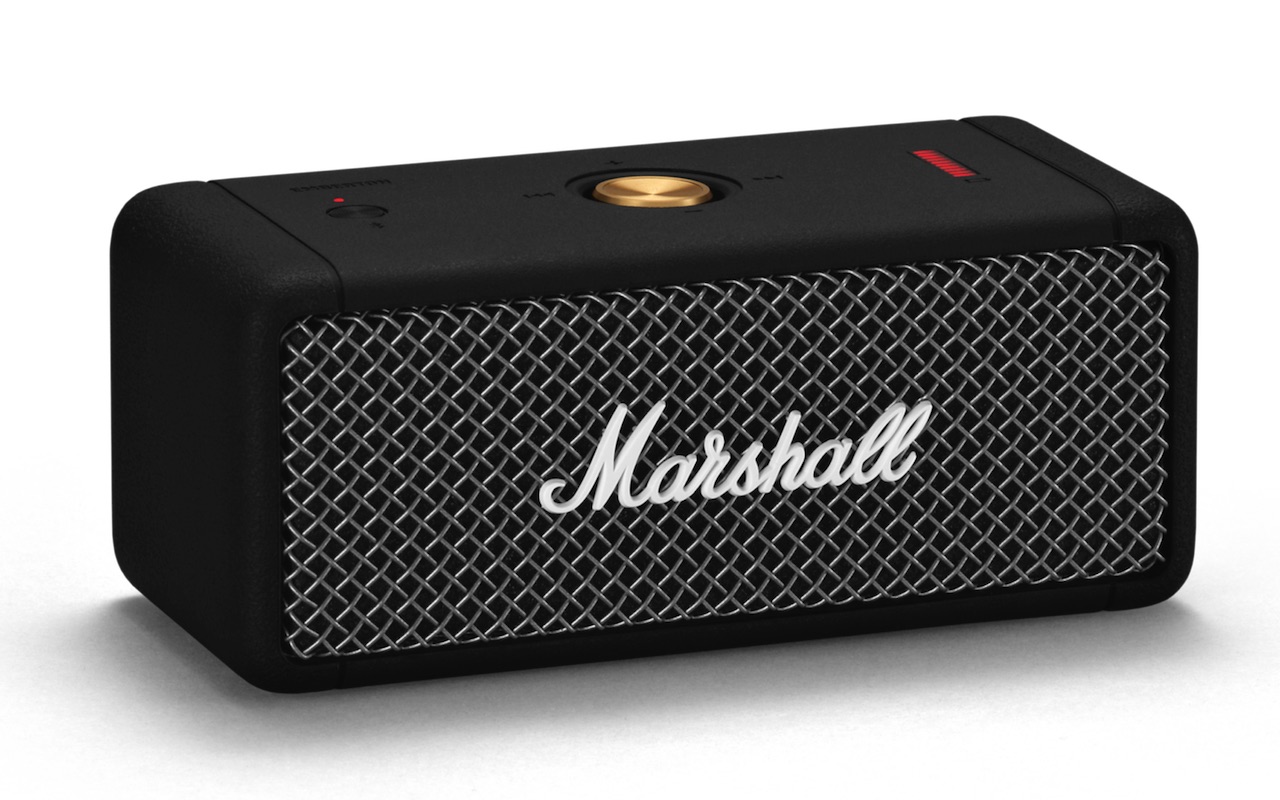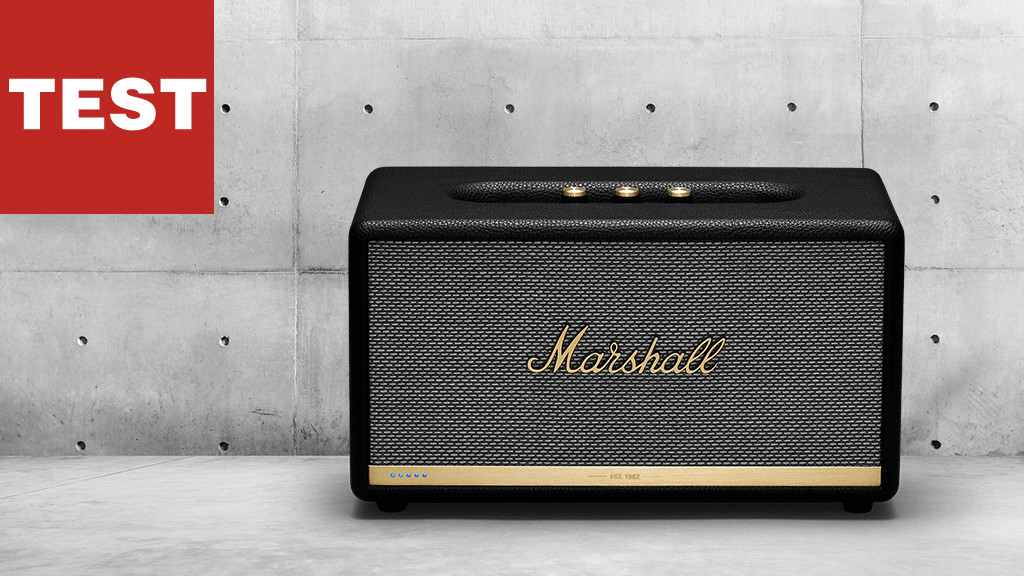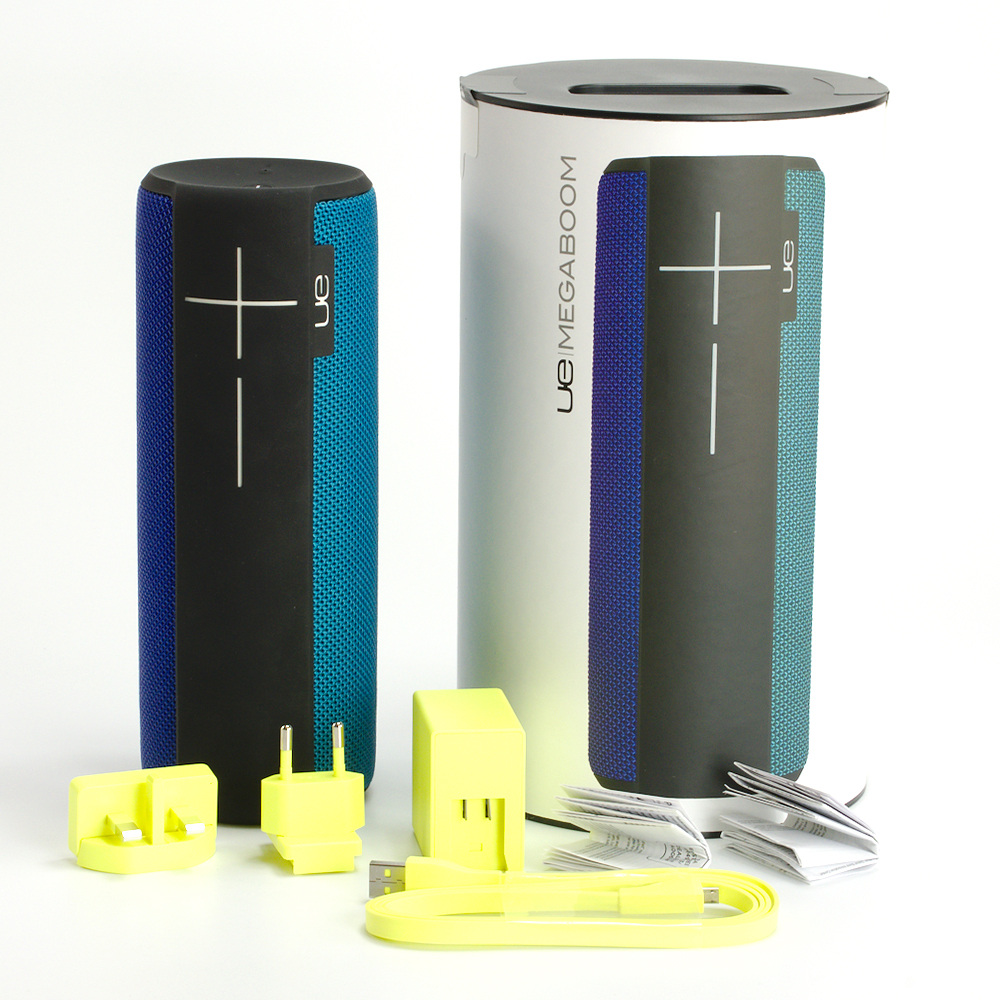Table of Content
That said, high-end is slightly lacking, contrary to the Big Four company’s promise. The bass response, moderately affected by a lack of low-end extension and a few resonances, remains fairly good overall. Despite the presence of two tweeters and two woofers, the sound field could be wider. Finally, since the speaker is a front-firing device, the directivity is quite poor. In terms of design, the Stanmore II Voice looks fantastic, with an upmarket and sophisticated color palette and rock-inspired hardware. Granted, it’s not cheap at nearly $400, but the speaker feels and looks expensive, and we can see it being a wonderful addition to the home, particularly for parties or super-hip listening sessions.
Notice the horizontal beige stripe at the bottom of this MarshallWoburn II. Base models of both Woburn and Stanmore speakers lack this stripe - which you can use to distinguish them from one another. The extra woofer in Marshall Woburn II will help it product more satisfying sounds compared to Stanmore II. You can see also this being reflected to the technical specs in the lower frequency department. The higher the high-frequency response, the clearer and crispier the treble. Dolby Atmos is a surround sound technology that allows sounds to be interpreted as three-dimensional objects. If you have a second speaker of the same type, you can pair them together to create a stereo sound setup. It also owes its good ranking to its great volume step consistency and its excellent maximum volume.
Marshall Stanmore II Voice Specs
Room acoustics, particularly room dimensions and speaker positioning, will have a pretty big impact on sound quality performance. A passive radiator is a type of driver that doesn't have a voice coil and a magnet. The sound vibrations produced by a passive radiator depend on its mass and the size of its enclosure. It is usually used in combination with a woofer to produce deep bass tones. Devices with stereo speakers deliver sound from independent channels on both left and right sides, creating a richer sound and a better experience.

At soft and quiet volumes, the tonal balance remains impressively consistent, as do all the dynamics sub-attributes . This makes the Google Home Max a relevant speaker for listening to music and podcasts, and even for watching videos at soft volumes. Speaking of videos, since the latency induced by both Google Cast and Bluetooth connections is quite significant, the auxiliary input at the back of the device is highly welcome. Further, the Smart Sound technology does, as promised, allow the speaker to adapt efficiently to its environment. Therefore, it is capable of dealing with complex acoustics, such as in bathrooms.
Spatial
You’ll know when Alexa has heard you because a row of five LED lights at the bottom of the speaker will glow blue, which is as functional as it is aesthetically pleasing, and then switch it over to the WiFi in your home. Our expert reviewers spend hours testing and comparing products and services so you can choose the best for you. PCMag.com is a leading authority on technology, delivering lab-based, independent reviews of the latest products and services.
If those mid frequencies were a little clearer, it would be a great choice for even the most discerning audiophile, but as things stand, we feel it’s more suited to casual listeners. Sensitive ears may find the harsh treble frequencies cause fatigue, but this can be rectified by adjusting the treble and bass dials on the top of the speakers. That being said, if it’s all about that bass for you, then you will likely be very happy indeed with the audio quality of the speaker, and it’s perfect for listening to hip-hop and other bass-heavy genres. This compact little speaker certainly packs an audio punch thanks to two 15 watt class D amplifiers powering its tweeters and 50 watt class D amplifier giving power to its mighty subwoofer. To pick up voice commands, the speaker has a dual microphone array, and we found it picked up our voice really well.
Google Home Max
Embedded Smart Sound technology allows the speaker to adapt to complex acoustics. The speaker’s overall dynamics remain particularly precise and impactful at soft and even quiet volumes. Our dynamics tests measure how well a device reproduces the energy level of a sound source, taking into account attack, bass precision, and punch. At nominal volume, the frequency ranges are well balanced, with particularly consistent midrange frequencies .

Spectral artifacts, on the other hand, can appear at quiet, nominal, and maximum listening levels . For example, bass resonances and distortions can manifest on tracks exhibiting powerful low-end frequencies, such as in Electronic music, regardless of the volume. With a volume sub-score of 132, the Google Home Max comes very close to our top-ranking speaker in this category. It performed remarkably well in every use case we put it through, from bedtime to partying, to relaxing at home, friendly gatherings, in the kitchen, the bathroom, and even outdoors. But there’s still room for improvement, especially in the high-ends, where instruments such as hi-hat cymbals lack precision, and at soft volumes , where punch is slightly lacking. The Home Max’s sub-score of 124 indicates very good behavior in the dynamics area.
Marshall Stanmore II Voice review
The levels are displayed in red underlit LEDs that surround each knob. To the right of this, there's a play/pause button, but there are no track navigation controls. These 60's rock and roll hipster speakers are made to be an elegant and functional piece of your authentically furnished home, boutique store, or a music studio. Whereas the woofers are the larger amplifiers, placed at the bottom of speakers, under the tweeters. In Marshall's line-up, Woburn II and Stanmore II are the first and second largest bluetooth speakers. Woburn II is more like a livingroom speaker whereas the Stanmore II is more like a shelf speaker.
All in all, if you’re looking for a great party speaker with the ability to control your smart home, the Stanmore II Voice could be your new best friend. The main calling card of this speaker is its Alexa integration, and we found this aspect worked very well, thanks partly to the far field microphone that picks up your voice wherever you are in the room. The rose-gold accents really lend the design of this speaker a sense of sophistication, and are carried through the bottom panel, Marshall logo, and the controls on the top of the casing. The Stanmore II Voice is around $50 more expensive than the non-Alexa Bluetooth version, and sits around the mid-range for Marshall speakers generally. Higher rating than its predecessor, and to make it a standout in the smart speaker realm. On the high end, we're also fans of the Google Home Max and the Apple HomePod.
DXOMARK timbre tests measure how well a speaker reproduces sound across the audible tonal range and takes into account bass, midrange, treble, tonal balance, and volume dependency. Our artifacts tests measure how much source audio is distorted when played back, along with such other sound artifacts as noise, pumping effects, and clipping. Distortion and other artifacts can occur both because of sound processing and because of the quality of the speakers. With an overall score of 145, the Google Home Max ranks second-best among all speakers we have tested to date, after Harman Kardon’s Citation 200.

From an SQ perspective Sonos Move, its essentially a perfect speaker, as one person put it, its like having the band in the room with you. This technology allows the users to use their smartphone as a remote control for the device. We consider a lower weight better because lighter devices are more comfortable to carry. A lower weight is also an advantage for home appliances, as it makes transportation easier, and for many other types of products. Volume is the quantity of three-dimensional space enclosed by the product's chassis or, in simpler terms, the space the product occupies. There is a control panel on the device body, so you can easily access the volume control or remote without having to interact with a cable or another device it's connected to.

No comments:
Post a Comment